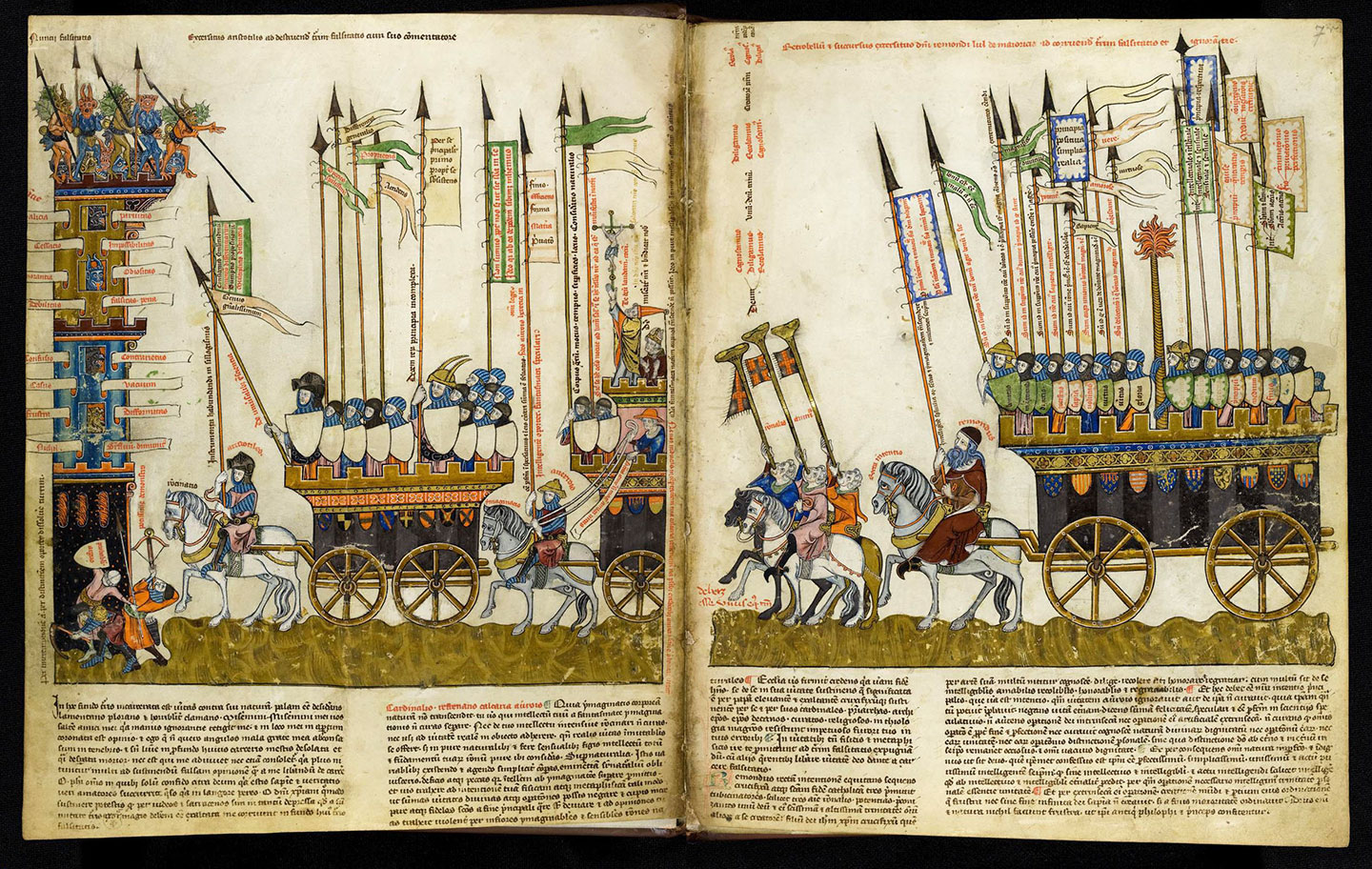See Allah’s Automata, eds. Seigfried Zielinski and Peter Weibel (Ostfildern: Hatje Cantz Verlag, 2015); and “On Deep Time Relations of Arts, Science and Technologies in the Arab-Islamic World and Beyond,” eds. Siegfried Zielinski et al., special issue, Variantology 4 (2010).
A kind of missionary artificial intelligence, Llull’s logical system sought to convert Muslims and Jews to Christianity.
I am grateful to Mary Beard for her nuanced translation of the following demon names from their medieval context: malitia, cessation, ignorantia, debilitas, confusio, casus, frustra, nihil, pravitas, impossibilitas, odiositas, falsitas, poena, contrarietas, vacuum, difformitas, superfluum, diminutum.
See Mary Carruthers, The Book of Memory: A Study of Memory in Medieval Culture (Cambridge: Cambridge University Press, 1990).
I am grateful to Iain Boyd Whyte for his patient translation of the indecipherable text beneath this image, from its German transcription →.
This is also the name of Leibniz’s machine, the calculus ratiocinator.
For our very brief purposes here, this is a much simplified account of the workings of Llull’ s Ars. For a comprehensive user’s manual, see Anthony Bonner’s unsurpassed The Art and Logic of Ramon Llull: A User’s Guide (Leiden: Koninklijke Brill, 2007).
Ernst Bloch, The Principles of Hope, vol. 2, trans. N. Plaice, S. Plaice, and P. Knight (Cambridge, MA: MIT Press, 1995), 653.
Note the subtlety and implicit tolerance at work in this nonbinary system: contrariety is the opposite of concordance, whereas difference simply denotes a difference that is not antithetical.
Like the universal languages to follow of Francis Bacon, Leibniz, John Wilkins, et al., this system is ruthlessly stripped of any redundancy.
Donald E. Knuth, The Art of Computer Programming, vol. 4, Generating All Trees: History of Combinatorial Generation (New Jersey: Addison Wesley, 2006), 58.
I am grateful to Zsuzsa Peters for her redrafting of Llull’s various diagrams.
As the combinatorial systems Llull inspired in the work of Giordano Bruno, Athanasius Kircher, and Leibniz were to confirm.
Bloch, The Principles of Hope, vol. 2, 652.
Ibid.
“The manic cutter known as the computer.” Friedrich Kittler, Optical Media, trans. Anthony Enns (Cambridge: Polity, 2010), 228.
Ibid, 230.
This aspect is further enhanced by interactivity: “For the Ars 39 he gives explanations of how to interpret these compartments, but then for the remaining 1041 the reader is left to his own devices. As Llull puts it, ‘the second group is dealt with in a more subtle fashion,’ which is a delicate way of asking the reader to make the effort to do it on his own. As if this weren’t enough, Llull adds yet a third group, in which the ‘artist,’ with the Ars’s two groups as models, is asked to make up his own questions and solutions. This new group is not only, he explains, ‘subtler’ than the other two, but it is ‘the general goal of the entire Art.’” Bonner, The Art and Logic of Ramon Llull, 294.
Peter Weibel, “Ramon Llull and the Digital Revolution,” in The Thinking Machine of Ramon Llull and the Ars Combinatoria (Barcelona: CCCB, 2016), 9.
See Paolo Rossi, Logic and the Art of Memory: The Quest for a Universal Language, trans. Stephen Clucas (London: Athlone, 2000).
Bonner, The Art and Logic of Ramon Llull, xiii.
Amador Vega, in The Thinking Machine of Ramon Llull and the Ars Combinatoria, 45.
That is, unable to use three-dimensional space as, for example, Kircher’s drawing of his secret box had. I say “unable,” well aware that this is a wholly insufficient attempt to pin down the difficult questions of exactly what representational obstacles were faced by Llull’s pre-perspectival representational context. If nothing else, “unable” simply indicates that the wheels of Arab water clocks, combinatorial locks, and navigation devices, such as the astrologer’s zairja, would already have been at the fore of Llull’s visual imagination of possible interface designs.
I am indebted here to friend and colleague Gergely Kovàcs for the illuminating discussions we have shared on these points and more generally during our ongoing research into the prehistory of computation.
Here I am stealing Parveen Adam’s compelling formulation in her work on the image. See The Emptiness of the Image: Psychoanalysis and Sexual Differences (London: Routledge, 1996).
To be fair, Blaise Pascal’s 1642 calculators, or Pascalines, had already introduced cogs, and, like Leibniz’s ratiocinator, they were startlingly similar in arrangement to a sketch by Leonardo da Vinci for a proto-calculator, itself inspired no doubt by the cypher-wheels of Leon Battista Alberti, who was also a keen Llullist.
Bacon had already figured that with enough combinatorial positions, two symbols would suffice, and Leibniz even describes a binary machine that would operate with marbles and holes, though he never developed it.
Louis Couturat, Opuscules et Fragments Inédits de Leibniz (Paris: Alcan, 1903), 27–28.
Llull, from Introductoria Artis demonstrativae, in Bonner, The Art and Logic of Ramon Llull, 18–19.
